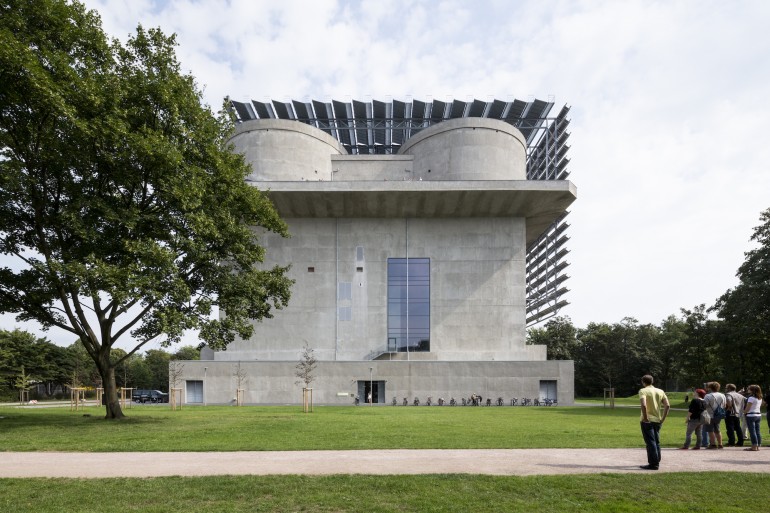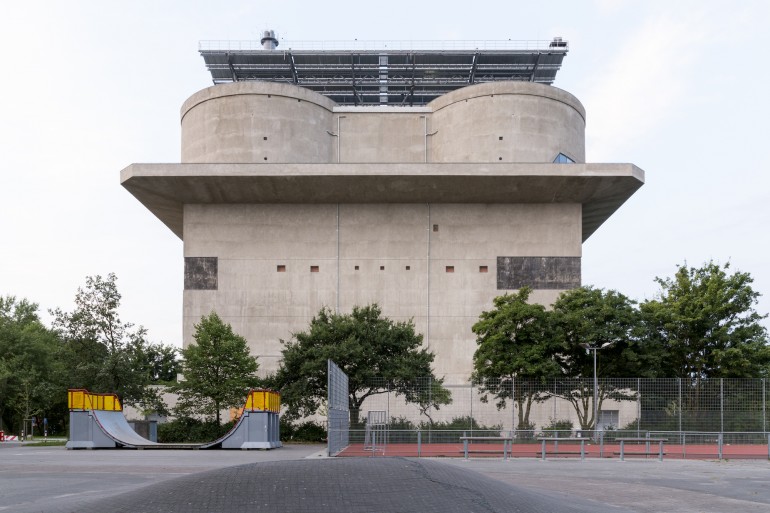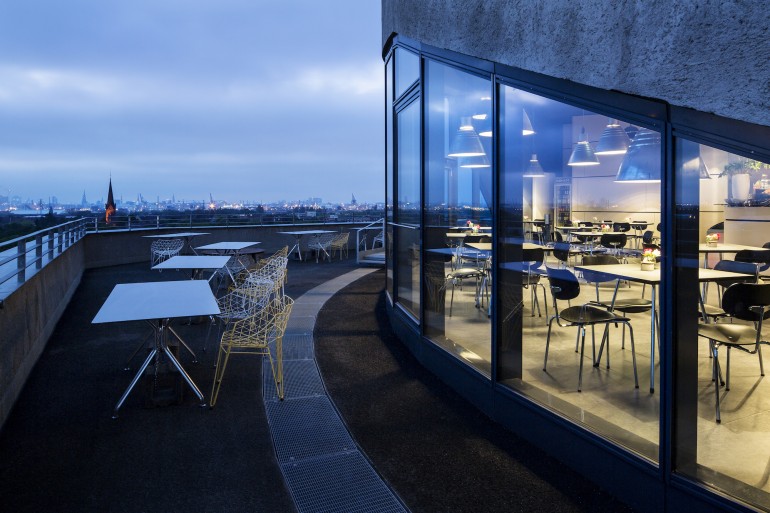In 1943, an anti-aircraft bunker was constructed by the Nazis in Hamburg, Germany. Some 70 years later, the structure is supplying power to more than 4,000 homes in the area.
Utility company Hamburg Energie partnered with IBA Hamburg to transform the building. The new "Energy Bunker" is already producing energy for the local community and will eventually provide heating to 3,000 homes and electricity to 1,000 others.
The anti-aircraft bunker had gun turrets to fend off Allied attacks, but also sheltered local people inside during air raids. At the end of WWII, the British wanted to destroy the building entirely, but demolishing the thick concrete walls likely would have damaged surrounding buildings. Instead, the British did away with most of the interior and left the exterior alone. The building remained this way for over 60 years, according to gizmag.
The original planning for the plant began in 2006, with actual renovation beginning in 2011. Funded by the European Regional Development Fund and the Hamburg Climate Protection Concept, the project came to approximately $36 million.
A 2 million-liter water reservoir plugs into the existing Reiherstieg heating network and will serve as a heat store for the plant. The plant features multiple heat sources: a biomass power plant; woodchip burning unit, which feeds into a large boiler; a solar thermal array located on the roof of the bunker; and waste heat from a nearby industrial plant.
To produce electricity, a photovoltaic system is installed on the building's southern facade; the wood burning unit that heats the reservoir doubles as an electricity-producing unit. The energy output is kept steady by a peak-load boiler and battery array.
In addition to the power plant, the building also includes a war memorial, cafe, and visitor's center.
Related Stories
| Sep 13, 2010
Committed to the Core
How a forward-looking city government, a growth-minded university, a developer with vision, and a determined Building Team are breathing life into downtown Phoenix.
| Sep 13, 2010
Data Centers Keeping Energy, Security in Check
Power consumption for data centers doubled from 2000 and 2006, and it is anticipated to double again by 2011, making these mission-critical facilities the nation's largest commercial user of electric power. With major technology companies investing heavily in new data centers, it's no wonder Building Teams see these mission-critical facilities as a golden opportunity, and why they are working hard to keep energy costs at data centers in check.
| Sep 13, 2010
3D Prototyping Goes Low-cost
Today’s less costly 3D color printers are attracting the attention of AEC firms looking to rapidly prototype designs and communicate design intent to clients.
| Aug 11, 2010
ASHRAE Receives NIST Grant to Study IAQ in Retail Stores
The American Society of Heating Refrigeration and Air-conditioning Engineers (ASHRAE) has been awarded $1.5 million dollars in grant money from the National Institute of Standards and Technology (NIST) to conduct a three-year research project on ventilation and indoor air quality in retail stores.
| Aug 11, 2010
UC Merced researchers receive $568,000 grant to develop solar sensing, tracking system
Alberto Cerpa, an engineering professor at the University of California Merced, has received a $568,202 grant from the National Science Foundation to develop a system that will measure and track the amount of sunlight that reaches ground level where photovoltaic panels and solar concentrators used in solar energy systems collect light and heat to turn into electricity.
| Aug 11, 2010
ASHRAE publishes paper on HVAC and airborne diseases
As health and school officials deal with a second wave of the H1N1 virus, commonly referred to as swine flu, ASHRAE has published information on health consequences of exposure to such airborne infectious diseases and the implications on the design, installation, and operation of HVAC systems.
| Aug 11, 2010
SPRI expands membership to include green roof and photovoltaic component suppliers
SPRI, the association representing sheet membrane and component suppliers to the commercial roofing industry, recently approved a bylaw revision expanding its membership to include companies that represent emerging technologies, such as photovoltaic and vegetative roof components.
| Aug 11, 2010
Guggenheim and Google team up on shelter design competition
The Solomon R. Guggenheim Museum and Google yesterday announced the launch of Design It: Shelter Competition, a global, online initiative that invites the public to use Google Earth and Google SketchUp to create and submit designs for virtual 3-D shelters for a location of their choice anywhere on Earth. The competition opened on June 8, 2009, in honor of Frank Lloyd Wright’s birthday, and closes to submissions on August 23.












